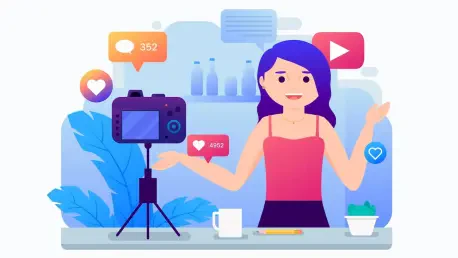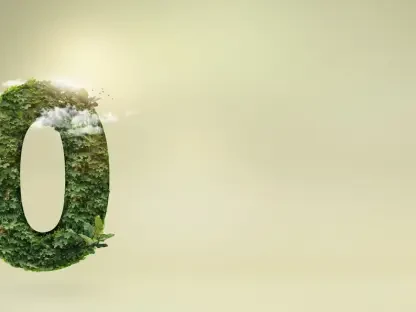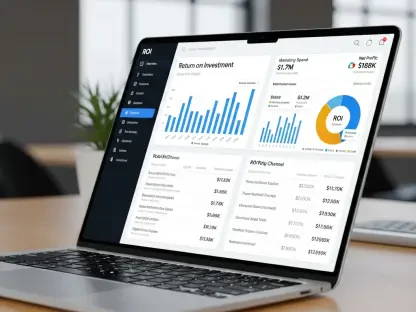In today’s fast-paced digital landscape, influencer marketing has undergone significant transformation, and Zainab Hussain, a seasoned e-commerce strategist, is here to share insights about this evolving field. With her expertise in customer engagement and operations management, Zainab provides a deeper understanding of how influencer marketing strategies have taken a new turn in 2025.
Can you explain the main shifts in influencer marketing that have occurred in 2025?
Influencer marketing has transitioned from a focus on follower counts to a more strategic and integrated approach. Brands are now building long-term partnerships with creators and implementing multi-platform campaigns. There’s a strong emphasis on measurable returns instead of just viral hits, making influencer marketing an essential part of business growth strategies.
How has the global spending on influencer marketing evolved up to 2025?
Global spending on influencer marketing has surged to $32.55 billion, as brands gear towards ROI-driven strategies. This rise is largely due to the industry’s ability to demonstrate measurable outcomes, pushing companies to increase their investment to capture higher returns.
What role does AI play in influencer marketing today?
AI is central to influencer marketing, streamlining processes from creator discovery and pricing to performance predictions and automated reporting. This integration allows brands to optimize their campaigns and make real-time adjustments, enhancing overall efficiency and effectiveness.
Why are brands moving beyond vanity metrics, and what are they focusing on now?
Brands have shifted their focus from traditional metrics like likes and follower counts to engagement metrics such as shares, saves, and replies. These metrics provide a more accurate reflection of ROI, allowing for better assessment of campaign performance and audience connection.
What kind of creators are brands preferring to work with in 2025, and why?
Brands prefer working with micro and mid-tier creators because they offer a more balanced engagement-to-cost ratio. These creators tend to have dedicated audiences, resulting in higher engagement rates, which translates into more meaningful interactions and better campaign outcomes.
How are creator costs changing, and what are the current rates for micro and nano creators?
Creator costs are rising as their value becomes more recognized. Micro creators command a median CPM of $119, while nano creators can fetch up to $211, owing to significant engagement rates ranging between 6.15% and 6.76%.
Which content formats are performing best in influencer marketing?
Short-form videos are leading the charge, with content that blends education and entertainment seeing high engagement. Platforms like Instagram and TikTok are at the forefront, especially for content that fosters discovery and trend creation.
How is short-form video content dominating the influencer marketing scene?
Short-form content, particularly on Instagram Reels and TikTok, dominates because of its ability to quickly capture attention with creative and engaging narratives. These formats are effective for product demos and trend-setting, providing brands with a pathway to rapidly expand their reach.
How are different industries tailoring their influencer marketing strategies?
Industries are customizing their strategies by aligning with specific creators and content formats that optimize performance. For instance, the retail sector benefits from mid-tier creator bundles, while the home & lifestyle industry leverages Pinterest to gain extended engagement durations, maximizing ROI.
What is the future of AI-powered influencer marketing?
AI-powered influencer marketing is poised to grow further, enhancing pricing models and enabling performance-based incentives. The focus on engagement metrics will evolve, steering brands towards deeper analysis of campaign success linked to authentic consumer interactions.
How are transparency and ethical practices impacting brand-creator partnerships?
Transparency and ethical practices are becoming crucial, impacting how brands form partnerships with creators. This shift ensures mutual trust and leads to more authentic collaborations, ultimately benefiting both parties by aligning values and promoting genuine messages.
What are the key characteristics of successful influencer marketing strategies in 2025?
Successful strategies in 2025 focus on authenticity and measurable outcomes. Brands are building systems that support sustainable, repeatable success rather than quick wins, fostering deeper connections with audiences through authentic and consistent messaging.
How are creators diversifying their income streams in 2025?
Creators are increasingly becoming multi-platform entrepreneurs, branching out to different income sources beyond brand deals. This diversification is driven by the need for financial stability and independence, given the slight decline in brand deal participation from 94% in 2024 to 78% in 2025.
What is your forecast for influencer marketing?
Looking ahead, influencer marketing will continue to evolve with technological advancements, particularly AI. The focus will deepen on transparency, ethics, and authentic collaborations that drive tangible outcomes. Brands and creators that adapt to these changes will thrive, setting new industry standards.









